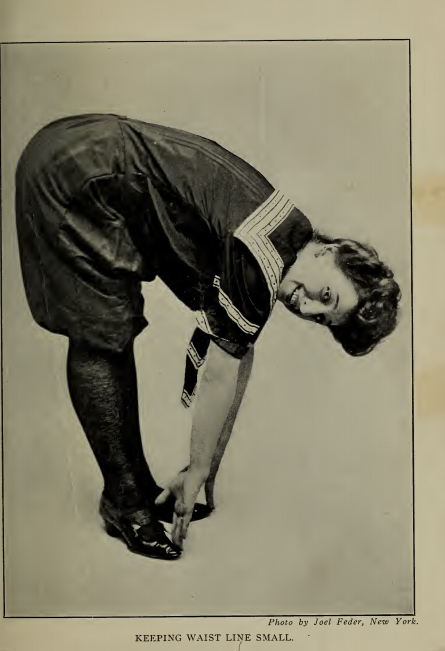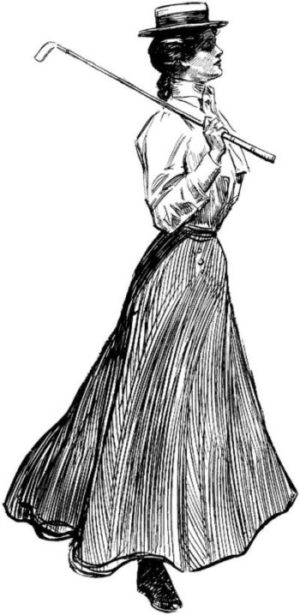
Between my recent Instagram post about Gibson girls and revisiting a favourite article detailing how the ideal woman’s body has changed over the past hundred years, I’ve had the 1910s on the brain a little bit.
I’d remembered an episode of Edwardian Farm where Ruth and her daughter were demonstrating the calisthenic exercises that became popular for women during the late 19th century, so I thought I’d investigate other exercises that were suggested for women at the beginning of the 20th.
Margaret Mixter offers many exercises that are “beautifying,” such as exercises for the arms with very light weights. These claimed to make the arms “graceful and supple,” without overexercising the muscles. An interesting feat for a terrifying-sounding exercise – holding clubs at arms-length and swinging them in all directions around your head!
The book also claims that bending over and touching your toes, as well as stretching side to side, will slim the waist.
Before bed, the book recommends a couple of calisthenic exercises done in front of an open window, including:
[D]oubling the fists, placing them at the shoulders and then thrusting them out at arm’s length swiftly. Both arms may be used together and then alternately.
 Mixter also writes that “housework is excellent exercise for a girl who wishes to develop a round, pretty figure, for sweeping, dusting, or even washing, if the latter is not too heavy to strain the muscles, helps to strengthen and beautify the body.” She recommends that standing up straight and sort of swaying as you sweep will “round” the arms and develop the hips. She also claims that a constant, firm grasp of a broom will round the arms.
Mixter also writes that “housework is excellent exercise for a girl who wishes to develop a round, pretty figure, for sweeping, dusting, or even washing, if the latter is not too heavy to strain the muscles, helps to strengthen and beautify the body.” She recommends that standing up straight and sort of swaying as you sweep will “round” the arms and develop the hips. She also claims that a constant, firm grasp of a broom will round the arms.
Personal hygiene and physical training for women suggests that women can’t withstand “prolonged physical and mental strain,” and offers “all forms of dancing, calisthenics and light gymnastics, archery, lawn-tennis, swimming, field hockey, lacrosse, sprint running, bicycling, rowing, canoeing, golf, skating, fencing, basket-ball, and all gymnastic plays and games” as evidently less strenuous exercise that women can excel in.
Girl and Woman: A Book for Mothers and Daughters, tends to agree, claiming, “no girl can risk the strain of a match game without danger of suffering from it sooner or later, not only because of the extreme bodily effort, but because of the nervous tension arising from the excitement of competition together with the emotional disturbance inevitably attending success or defeat.”
There isn’t perfect consensus about the approved types of exercise for women (that won’t make their heads explode, apparently). Girl and woman speaks of bicycle riding as as a relic from the past, though it did have advantages as exercise. It “obliges such incessant attention to itself that enjoyment of scenery or agreeable conversation with a companion are impossible, and it rarely fails to develop a species of obsession which destroys all pleasure in any other variety of amusement.”
As an aside, one charming thing about the above-mentioned book was how happy its author seemed about certain advances in exercise for girls and women. For example, “in our grandmothers’ time [ice-skating] was considered almost as indecorous as the flying trapeze.”
It’s neat to be able to chart certain items of progress that we tend to take for granted today – ice skating, and being able to play a competitive sport and lose without fear of it shattering our dainty nerves!
References:
- Mixter, Margaret. Health and beauty hints. New York: Cupples & Leon Company, 1910.
- Dr Galbraith, Anna Mary. Personal hygiene and physical training for women. Philadelphia: W.B. Saunders Company, 1916.
- Latimer, Caroline Wormeley. Girl and Woman: A Book for Mothers and Daughters. New York: D. Appleton and Company, 1910.
